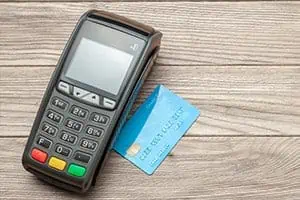B2B, or business to business, describes a transaction in which the customer is another business rather than of an individual. Whether it’s goods, services, or both, B2B payments include transactions such as purchasing supplies to do business, buying lunch for employees, or paying for travel expenses. Though the payment methods for B2B transactions are often the same as for B2C (business to consumer), credit card and checks – there are differences that need to be taken into consideration. Often times businesses use “business credit cards” which have a high interchange fee compared to consumer credit cards. In this article, you will learn about “Level 1, 2, and 3 data” – a way to lower interchange fees substantially for B2B transactions.
Transition to B2B Credit Card Purchases
Businesses are increasingly moving away from invoices and checks to pay for business to business goods and services and moving toward using a business credit card to separate business expenses from personal expenses.
When setting up business to business credit card purchases, merchants can qualify for lower B2B interchange rates when processing business credit cards. By leveraging lower interchange rates for B2B credit card processing, businesses can save potentially hundreds if not thousands of dollars.
The Cost of Doing Business – Without Data
Without taking advantage of lower interchange rates, B2B credit card processing is expensive to process. The worst rate is 3.26% + $0.10 (the MasterCard rate with no AVS data). The lower rates require a business to jump through some hoops, also known as levels, in order to qualify for these lower rates. These hoops are data. The more data a business provides via a transaction, the smaller the interchange fee for that transaction.
Level 1, 2, and 3 Data – The Higher the Level, the Lower the Fees
Level 1 Data
The basic level, Level 1, is a transaction providing the least amount of data to the credit card brands. All transactions are required to reach Level 1 whether they are B2B or B2C. Merchants must provide the merchant name, purchase amount, date, and billing zip code. This level offers only a small reduction in interchange rates.
Level 2 Data
In order to reach Level 2 interchange rates, a business must provide Level 1 data, as well as other data including sales tax amount, tax indicator, and other details of the transaction. While Visa and Mastercard have different requirements for this level, Discover doesn’t offer lower rates for Level 2 or Level 3. And American Express supports Level 1 and Level 2 while it does not support Level 3.
Level 3 Data
Level 3 requires all of the data from Levels 1 and 2 plus other data such as item commodity code, SKU description, product code, and even more data points involving the transaction. Not only do the credit card brands vary in their interchange rates depending on the Level, but they also can change these rates. Thus, a merchant must be vigilant in checking the requirements.
Lower Interchange Fees for Businesses
Merchant credit card processing services can help businesses get the lowest rates possible by properly classifying the business’s MCC code, which can reduce interchange rates, by helping a business properly process large sales, over $6,500, which also can reduce interchange rates, and by providing a business software or terminals specifically for B2B sales equipped with the Level 2 and Level 3 information, which reduces interchange rates. While B2C transactions might focus on the markup, merchants want to look at the total cost for B2B transactions.


